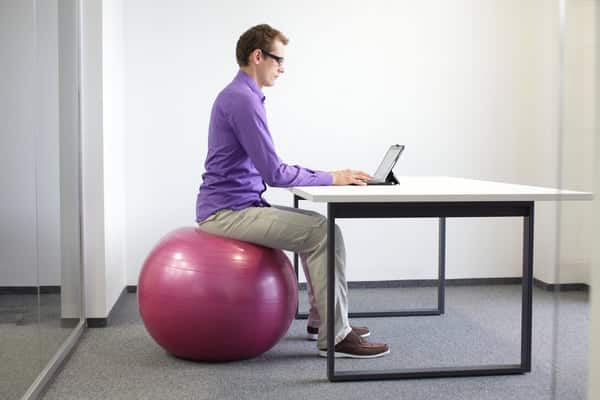To be a great runner, you have to take advantage of every opportunity to improve. What many do not realize, however, is that trading some time on the track in favor of a well-structured gym routine could make all the difference. There are multiple reasons why implementing some strength training for runners will improve your running time, but there are also some benefits you might not expect.
Perhaps one of the most important advantages of adding strength moves for runners is injury prevention. Typically, runners tend to experience injury more often than other exercisers. The repetitive stress of running, combined with weak muscles like gluteals or hip flexors can cause serious problems. By boosting your overall strength, especially in areas critical to running, you increase the body’s resiliency and reduce the likelihood of injury. By supplementing your training with a series of strength moves for runners, you will improve weaknesses in the body in a way that running alone cannot.
For example, three of the most common running injuries, Iliotibial Band Syndrome, runner’s knee, and hamstring issues, all can be prevented or have their likelihood of occurrence reduced by increasing gluteal and hip muscle strength. Some simple strength training for runners not only makes your body stronger and more efficient but it actually allows you to run more because it keeps your injuries to a minimum!
That’s not to say that you should ignore training the upper body, though. A strong core promotes better posture and improves efficiency. Having a well-balanced and strong overall physique also helps encourage lower body fat levels and a better metabolism.
Strength training makes the body faster, more efficient and less susceptible to a painful injury. Check out these 10 best strength exercises for runners and get ready to reap the benefits of a stronger body.
Lower body strength moves for runners
Some of the best strength moves for runners target the muscles of the hips. Strengthening the hips and glutes can help runners prevent some of the most common injuries in the sport. For example, runner’s knee can be caused by running with tight, weak hips. Dysfunctional hip movement can put undue stress on the knees, thus resulting in this nagging problem.
Clamshell
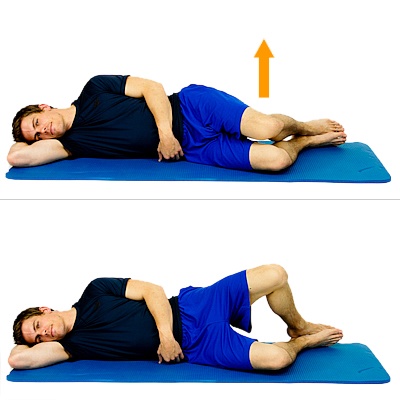
- Lie on your side with your hips and knees bent 45 degrees, legs stacked.
- Keeping your feet in contact with each other, raise your upper knee as high as you can without moving your pelvis. Don’t allow your lower leg to move off the floor.
- Pause, then return to the starting position. Do all reps on one side and then repeat with the other leg on top.
Hip Thrusts
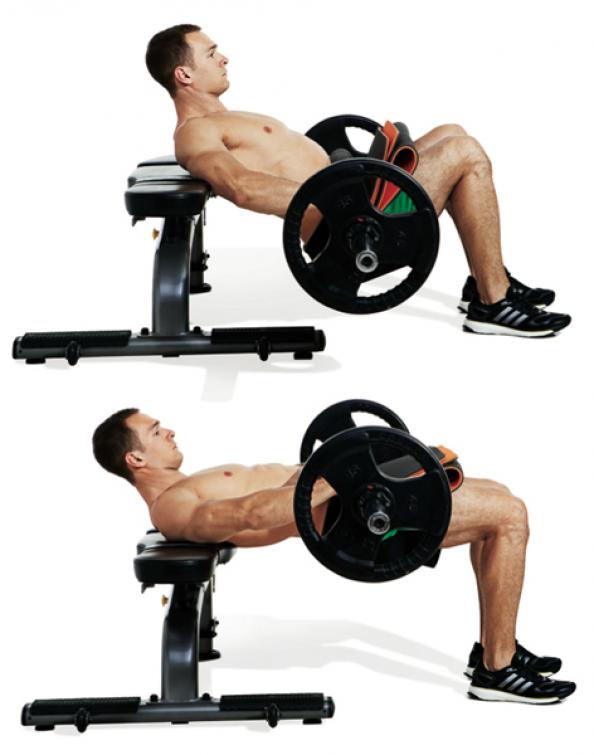
- Sit on the floor with your back against one side of a bench, your shoulder blades hooked onto the edge, arms reaching out to the sides, and knees bent to a 90-degree angle.
- Exhale, press your feet into the ground and raise the hips up so you create a straight line from your knees to shoulders, by squeezing your glutes as tight as you can.
- Be very careful not to arch your lower back into hyper-extension. Focus on keeping your ribcage and your pelvis tucked towards one another throughout the exercise.
- Inhale, lower the hips down towards the floor as you raise your upper body up, and return to the starting position.
http://www.mensfitness.com/training/
Single-leg Romanian Deadlift
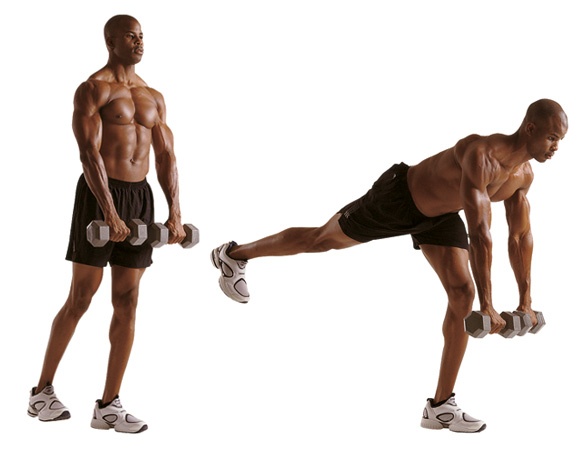
- Stand on your right leg, hold a light to moderate weight dumbbell or kettlebell in your right hand.
- Bending at the hip, extend your left leg behind you for balance.
- Keep the right knee slightly bent and continue bending at the hip until you are parallel to the ground.
- Slowly return to the upright position. Do one set on the right leg before switching to the left leg.
Barbell Squat
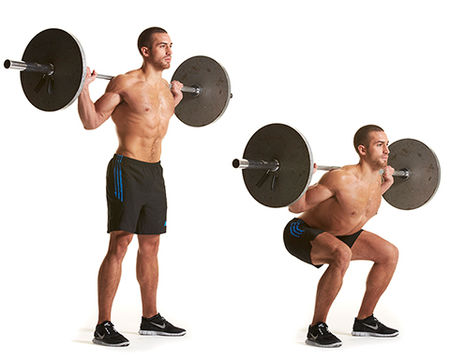
- Stand with your feet beneath your shoulders.
- Inhale and lower your body like you’re sitting down in a chair. Keep the back neutral, chest up and core engaged.
- Push your feet into the ground like you’re trying to split apart the floor beneath you. This will help engage your glutes.
- Lower your body until the thighs are at least parallel to the ground.
- Keep your torso stiff as you exhale and press your body back up to standing.
Core strength training for runners
To run your personal record, you’re going to need prize-worthy core strength. The muscles of your abdominals, lower back, and glutes stabilize the body as your legs propel you forward. A weak core can chip away at your running efficacy and make traversing hills especially difficult.
Standing Cable Wood Choppers

https://www.pinterest.com/pin/568368415447355356/
Dolphin Plank
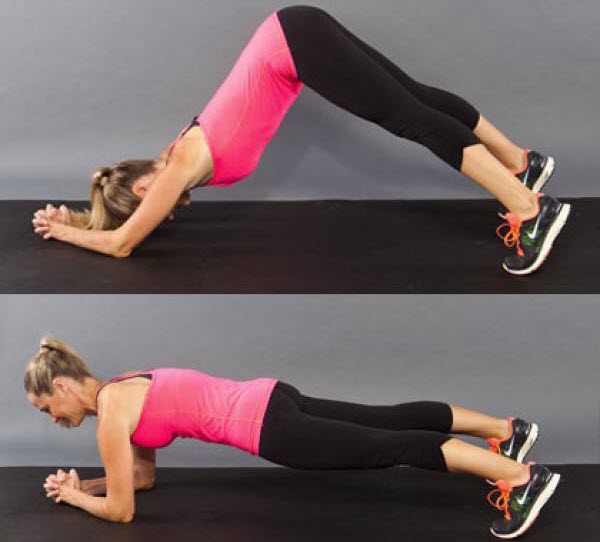
- Lay on your belly with toes tucked and forearms on the floor.
- Brace the core, and lift your hips into low plank position so that your weight is on the forearms and toes.
- Inhale and press the hips toward the ceiling, so your body forms an inverted V.
- Hold for a moment and then slowly return to starting position.
Side Plank
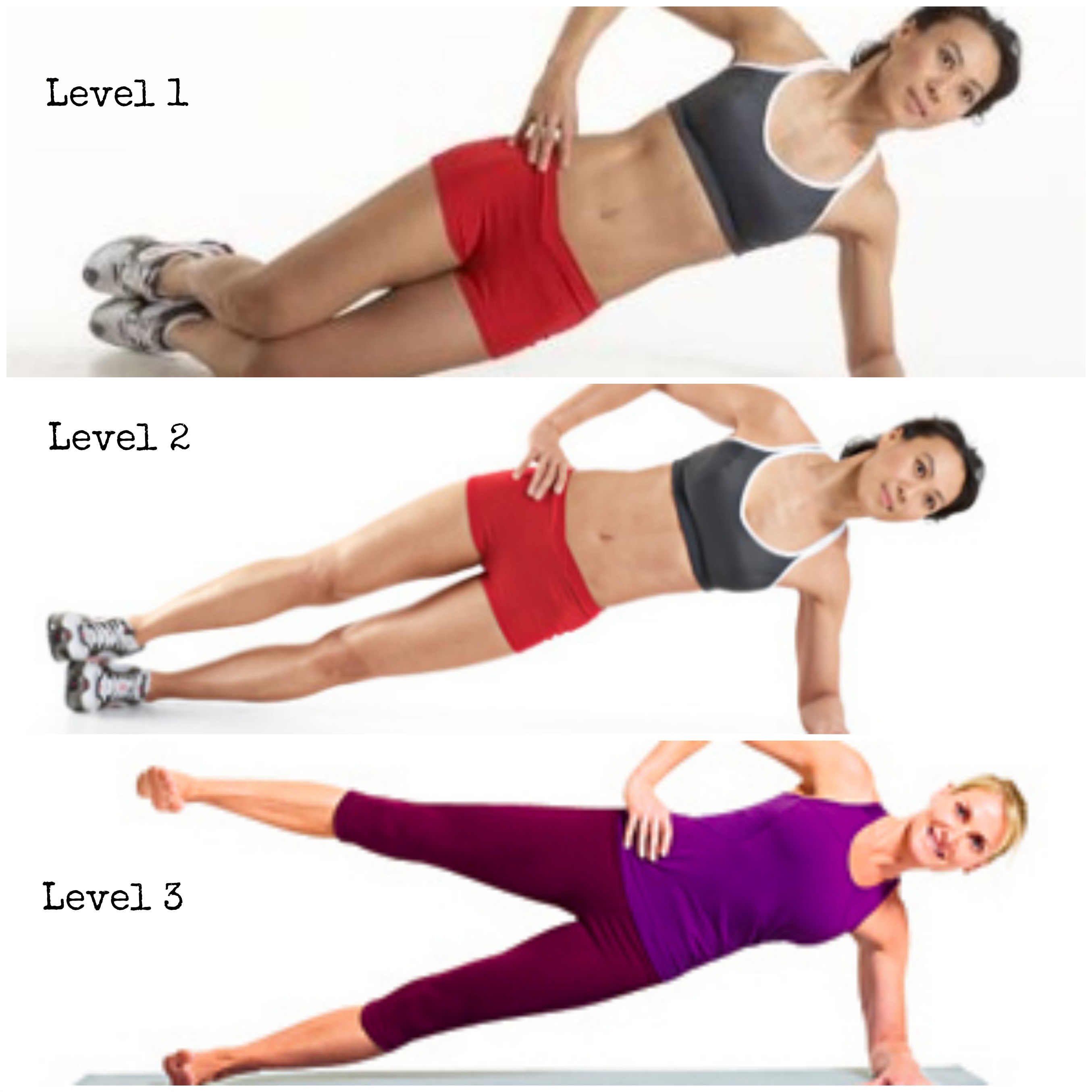
- Lie on your right side with your legs straight. Prop yourself up with your right forearm. Rest your left hand on your hip.
- Exhale and lift the hips off the ground so your body forms a diagonal line.
- Brace your abs, squeeze in the lateral hip, and keep your shoulders stacked on top of one another. Be sure your hips and knees stay off the floor the whole time.
- Hold for 15-45 seconds. Start with four 15-second holds and work toward one 45-second hold.
Upper body strength moves for runners
Runners tend to focus on their lower body strength at the expense of their upper body. This is a mistake that could cost you some serious speed. The arms counterbalance the motion of your legs as you run and your arms help propel you forward with each swing, so the lower body really isn’t doing all the work. A strong upper body will help you build speed and reduce fatigue.
One-Arm Bent Over Dumbbell Row
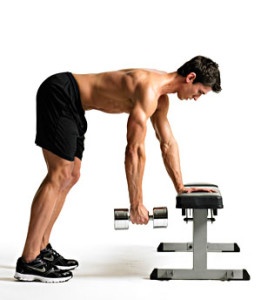
- Hold a dumbbell in the right hand and step forward with the left leg.
- Bend at the hips until your torso is at a 45 degrees angle with the floor.
- Let the right arm hang below the shoulder; the left hand can rest on your thigh. Brace the core and maintain a neutral spine.
- Exhale, pull the weight up towards your body by driving your elbow up and retracting your shoulder blade.
- Inhale, return your arm to the starting position. Keep the rest of your body braced and steady throughout the exercise. Complete a set on one arm then switch sides.
Plank Row
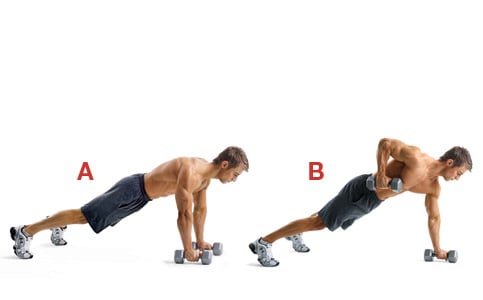
- Start in a plank position with your hands holding the dumbbells with a neutral wrist, set your legs wider than hip-width. The wider stance makes you more stable.
- Engage both your core and your glutes, then exhale as you lift your right elbow up toward the ceiling to perform a row. You should feel your right shoulder blade sliding toward the spine.
- Inhale as you return the weight to the ground and repeat the movement on your left side.
Dumbbell Push Press
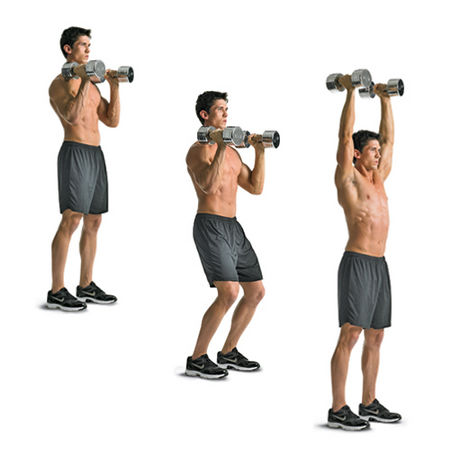
- Stand holding a pair of dumbbells just outside of and above your shoulders. The feet should be shoulder-width apart with your knees slightly bent.
- Dip your knees and press your hips behind you, then exhale as you explosively push up with your legs and press the dumbbells straight over your shoulders.
- Return to the starting position with control.
Example Strength Training Routine for Runners
- Do some dynamic stretching for 5-10 minutes.
- Follow the warm up circuit.
- Perform each strength exercise for 3 sets of 10-15 repetitions.
- Rest between sets as needed.
- End the workout with static stretching.
Warm up Circuit
- 10-20 Dolphin Planks
- 20 Clamshells on each side
- 1 Side Plank on each side for 15-45 seconds
Strength Exercises
- One-Arm Bent Over Dumbbell Row
- Bodyweight Squat
- Dumbbell Push Press
- Single-leg Romanian Deadlift
- Standing Cable Wood Choppers
When you get right down to it, there is no reason not to start strength training. Performing these strength moves for runners will reduce overuse injuries, develop a more efficient body and improve your performance. Doing a combination of lower body, upper body, and core strength exercises promote a well-balanced physique that running alone cannot match.
Find what works for you and keep at it. Much like how your mile time gradually improves, the more you strength train and build muscle, the more resilient your body becomes. You don’t have to burn hours in the gym to experience these benefits, either. Simply putting in a solid 20 or 30 minute program in a few times a week is enough to see progress. Plus, when you factor in time lost for injury recovery, you very well may find yourself running more, not less.
Remember, strength training makes the body faster, more efficient and less susceptible to a painful injury. Supplementing your training regime with these10 best strength exercises for runners will put you on the path to running your very best.
Be sure to check out our blog post on the Top 5 Running Injuries and How to Prevent Them.
{{cta(‘e31b1793-085e-4b69-b9cb-e83795b06f58′,’justifycenter’)}}


